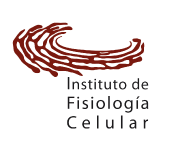Inflammation is regulated by the adenosine derivative molecule, IFC-305, during reversion of cirrhosis in a CCl<inf>4</inf>rat model
Pérez-Cabeza de Vaca, R., Domínguez-López, M., Guerrero-Celis, N., Rodríguez-Aguilera, J. R., & Chagoya de Sánchez, V. (2018). Inflammation is regulated by the adenosine derivative molecule, IFC-305, during reversion of cirrhosis in a CCl4 rat model. International Immunopharmacology, 54, 12?23. doi:10.1016/j.intimp.2017.10.019
Cirrhosis is a liver pathology originated by hepatocytes, Kupffer and hepatic stellate cells interactions and transformations. This pathology is associated with inflammation and fibrosis, originated by molecular signals secreted by immunological and parenchymal cells, such as cytokines and chemokines, like IL-1β, IL-6, TNF-α or MCP-1, driven by Kupffer cells signals. As part of inflammation resolution, the same activated Kupffer cells contribute to anti-inflammatory effects with IL-10 and MMP-9 secretion. In a Wistar rat model, cirrhosis induced with CCl4 is characterized by increased inflammatory cytokines, IL-6, IL-1β, MCP-1, and TNF-α, in plasma and liver tissue. The IFC-305 compound, an adenosine derivative salt, reverses the cirrhosis in this model, suggesting that immune mechanisms related to inflammation should be explored. The IFC-305 reduced inflammatory cytokines, supporting the anti-inflammatory effects induced by the elevation of IL-10, as well as the reduction of M1 inflammatory macrophages (CD11b/c+/CD163+) and the increase of M2 anti-inflammatory macrophages (HIS36+/CD11b+), measured by flow cytometry. Furthermore, the IFC-305 enhances the metabolic activity of arginase and moderates the inducible nitric oxide synthetase, evaluated through biochemical and immunohistochemical methods. These results contribute to understand the function of the IFC-305, which modulates the immune response in the Wistar rat model of CCl4-induced cirrhosis and support the hepatic protective action through an anti-inflammatory effect, mainly mediated by Kupffer cells.




